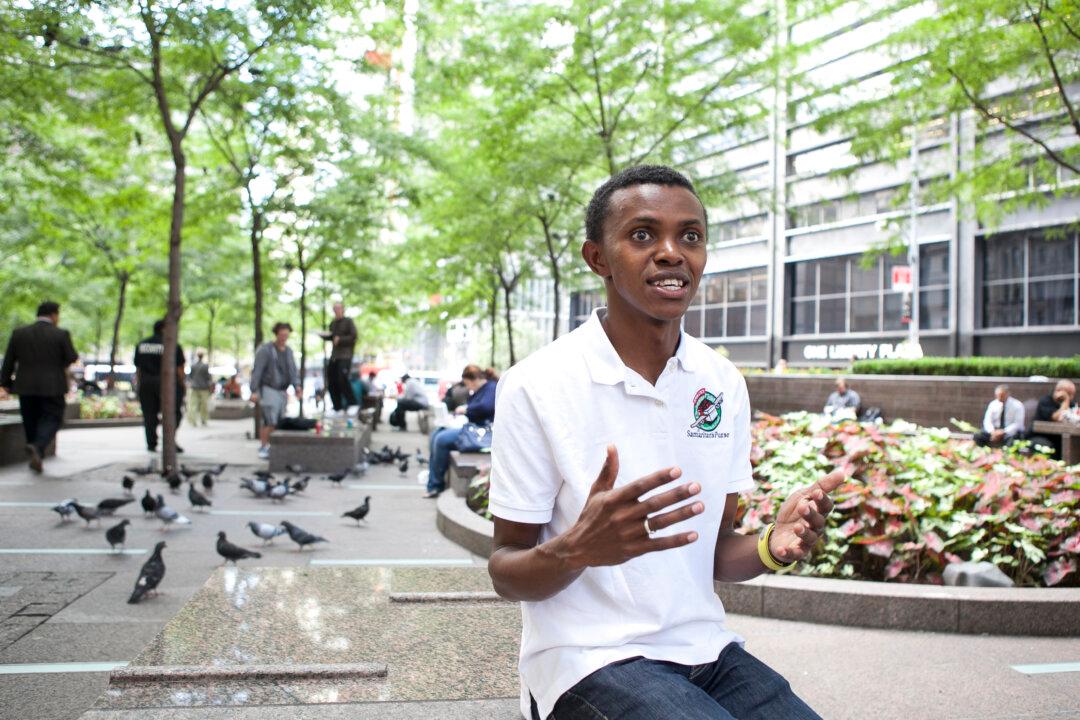NEW YORK—Alex Nsengimana’s mother died from HIV/AIDS when he was 4. For the next two years, his grandmother and his uncle were his world. They lived on a farm in Butamwa village, Rwanda, where they grew avocados, bananas, and sweet potatoes. He watched his grandmother plant their food and run their house.
Little would he know, this dignified, authoritative, woman, whom he had just begun to call mother, would be one of the first to die during the Rwandan Genocide.
When Rwandan President Habyarimana’s plane was shot down on April 6, 1994, the media and government disseminated hatred and fear toward the Tutsi tribe. Nsengimana’s family was Tutsi.
On the morning of April 7, they knew their Hutu neighbors—who had been their friends before that day—were coming to kill them.
They went into hiding in the morning, but snuck back into the house during the afternoon.
There was a noise.
Nsengimana’s older sister went to check what it was. As the late-afternoon rays shone through their window, a large rock flew through the glass. A moment later the anti-Tutsi militia smashed through the door.
The militia told everyone to go outside and lie down.
For a reason that Nsengimana still does not know today, the militia told the children to return inside.
Then, slowly, the militia clubbed their grandmother to death. Nsengimana, 6, saw everything from the window.
“When she was killed, that was the worst day,” he said. “Everything I did was because she did. Losing her, that destroyed my life.”





